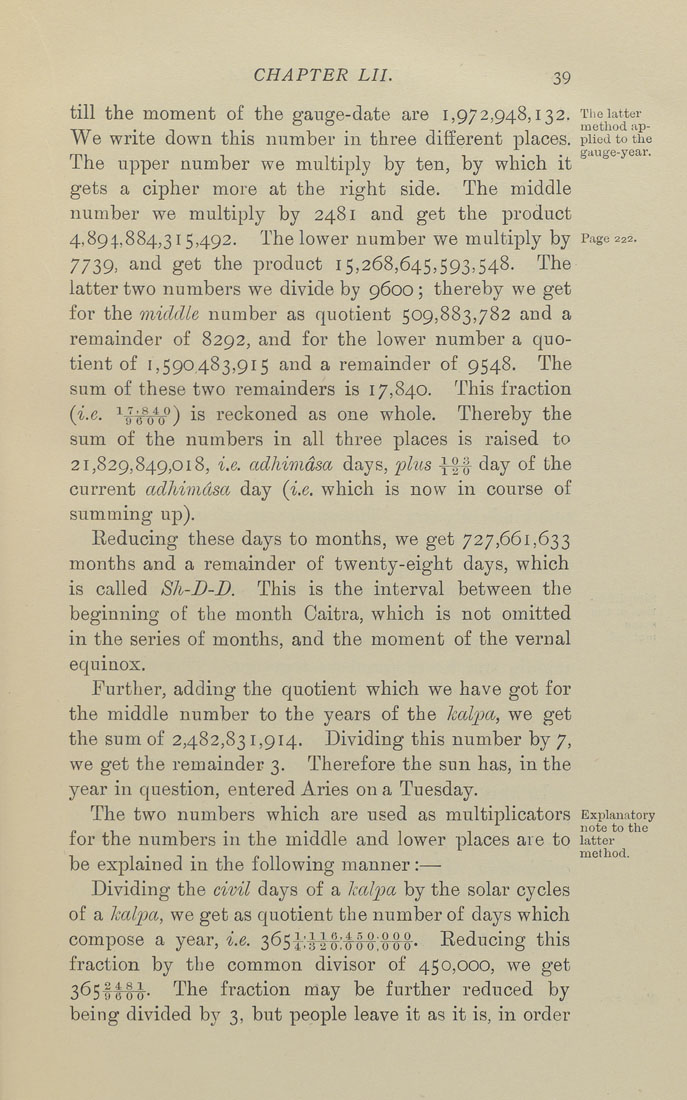CHAPTER LII. 39
till the moment of the gauge-date are 1,972,948,132. The latter
We write down this number in three different places, piled to the
The upper number we multiply by ten, by which it
gets a cipher more at the right side. The middle
number we multiply by 2481 and get the product
4,894,884,315,492. The lower number v/e multiply by Page 222.
7739, and get the product 15,268,645,593,548. The
latter two numbers we divide by 9600; thereby we get
for the middle number as quotient 509,883,782 and a
remainder of 8292, and for the lower number a quo¬
tient of 1,590,483,915 and a remainder of 9548. The
sum of these two remainders is 17,840. This fraction
(i.e. ^l-g-Vjf) is reckoned as one whole. Thereby the
sum of the numbers in all three places is raised to
21,829,849,018, i.e. ctdhimdsa days, plus ^-f-g- day of the
current adhimdsa day (i.e. which is now in course of
summing up).
Eeducing these days to months, we get 727,661,633
months and a remainder of twenty-eight days, which
is called Sh-D-D. This is the interval between the
beginning of the month Caitra, which is not omitted
in the series of months, and the moment of the vernal
equinox.
Further, adding the quotient which we have got for
the middle number to the years of the kalpa, we get
the sum of 2,482,831,914. Dividing this number by 7,
we get the remainder 3. Therefore the sun has, in the
year in question, entered Aries on a Tuesday.
The two numbers which are used as multiplicators Explanatory
for the numbers in the middle and lower places are to latter
be explained in the following manner:—
Dividing the civil days of a kcdpa by the solar cycles
of a kalpa, we get as quotient the number of days which
compose a year, i.e. Z^S\',^^%\-^^%\%%^' Eeducing this
fraction by the common divisor of 450,000, we get
365f|-7ro'- The fraction may be further reduced by
being divided by 3, but people leave it as it is, in order
|








